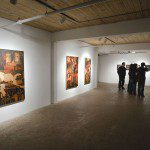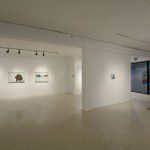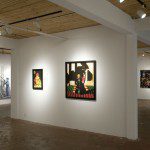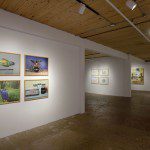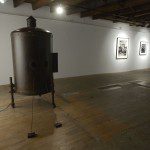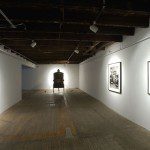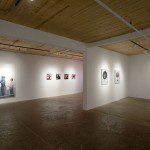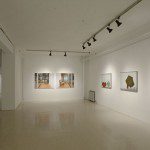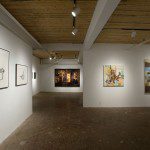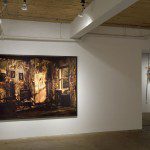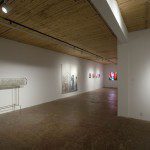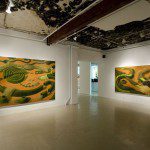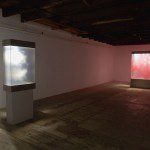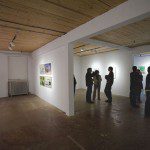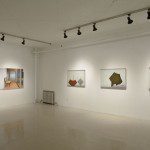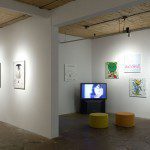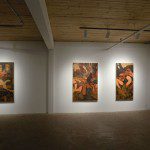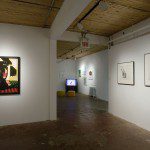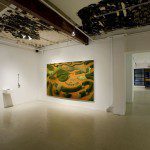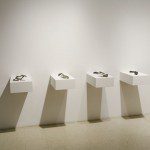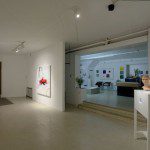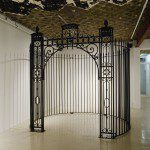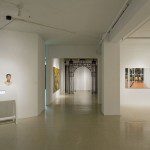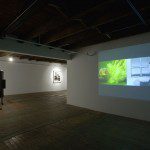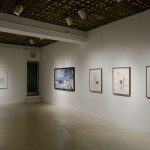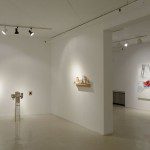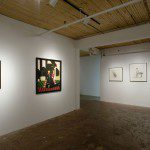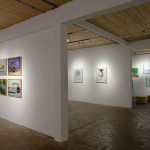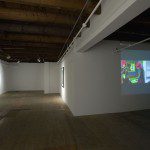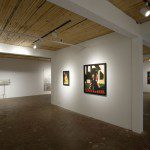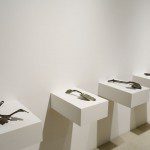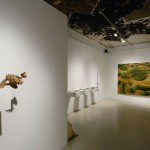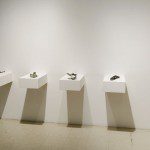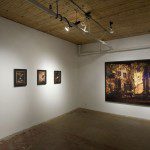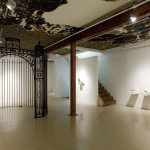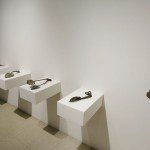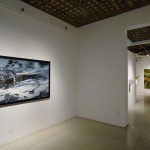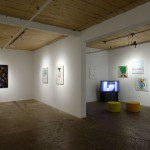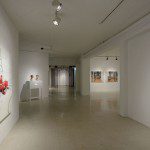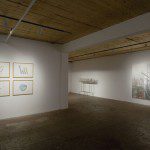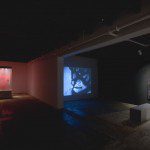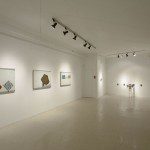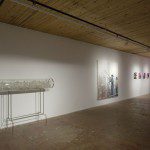26 artists: Lois Andison, Monique Bertrand, Judith Berry, Sylvie Bouchard, Michel Boulanger, Paul Bourgault, Jane Buyers, Jakub Dolejs, Doyon Rivest, Juliana Espana Keller, Gary Evans, Janieta Eyre, Dominique Gaucher, Nicolas Grenier, David Hlynsky, Holly King, Guillaume Lachapelle, Sylvie Laliberté, Éric Lamontagne, Dominique Morel, Diane Morin, Yannick Pouliot, Carlos & Jason Sanchez, Rafael Sottolichio, David Spriggs, Diana Thorneycroft
Text by Andria Hickey
Things are not always what they seem. There is never only one version of a story and a sideways glance might reveal more than expected. Between simulation and disappearance, the works presented in the 10 th Anniversary exhibition of Art Mûr play a game with truth, daring the artwork to render the viewer a believer . In an excavation of reality, Art Fiction asks the viewer to pick up the pieces in an examination of the relationship between the artificial and the real. In a collection of works by 28 emerging and senior Canadian artists from the gallery and by invitation, the exhibition challenges the viewer to mine suspended moments for clues of before and after, the secrets of what may have happened and what might be. Together, these works explore latent imaginaries where the interplay of scale, motion and scenario present the viewer with the implied space of possibility.
Bringing together a variety of media from photography to installation, sculpture, painting and video, the works in Art Fiction suggests a moment observed, the captured residue of something happening. Moving through the exhibition space, the viewer becomes both reader and writer in a process of re-enchantment where the drama is staged, frozen and suspended. David Sprigg’s “Movement” (2003), layers multiple two-dimensional drawings to create a freeze frame of a three-dimensional sculpture, cinematically paused before the viewer. Likewise, the meticulously staged photography of Carlos and Jason Sanchez is itself an exercise in narrative. Between performance and cinema, the Sanchez brothers work facilitates a pathologic architecture of the authentic fake, where each unresolved set calls for circumstance, character, and climax. Similar to a film still, “After the fire” (2005) invites the viewer to be involved in the remains of experience and subsequently in the legitimacy of what is both real and unreal.
A negotiation of the relationship between fiction and fact is not only a symptom of the postmodern condition, it is also a compromise of representation. Working in a tradition of photography which proposes a documentation of the unreal, Janeita Eyre’s mimetic portraits are “an accumulation of impossible memories”. Bringing together personal fictions, mythologies of psychoanalysis, and the pop culture imagery of the everyday; Eyre’s portraits are not only the fiction of her “Siamese twin separated at birth” but also a narrative of photographic desire to make the imaginary real. Likewise, Holly King’s ethereal landscapes credit the sublime ability of the photograph to entertain the possible reality of fantasy.
From the otherworldliness of King’s imaginary the exhibition leads the viewer toward rabbit holes of other sorts. Scissors become organic debris, candy becomes a hard to swallow message. Lois Andison’s experiments in the impossible lend themselves to uptopian desiresvin “Emerald City” (1999), where within a test tube pedestal a miniature world of glass glows with soft electricity. Guillaume Lachapelle’s intricate and miniature theatrical sets are gestures toward fairy tales and comic strips. His figures become strange characters of twisted stories where ” dogs wear human masks, humans wear bunny and rhino masks, penises sprout from coat racks and butt-plugs float like balloons” 1. Similarly, Diana Thorneycroft’s drawings invert anticipated narratives, placing familiar characters in an unlikely version of the story. The birds-eye perspective of Judith Berri’s fictional landscapes entertain the possibility of a topography for fantasy, while Rafael Sottichilito’s paintings propose a fluidity between subject and daydream. Yannick Pouliot’s installations themselves act as interventions in the gallery space, offering another world, an other space, where the viewer is presented both access and escape.
These works not only deconstruct a frame of representation, they are also experimenting in the expectation that contemporary reality is simultaneously version, variation and virtual. That which is unreal is matched with the supra-real. As a spectator of this encounter, the viewer becomes both player and jury in a volley for truth. Like the works in this exhibition, the viewer becomes responsible for a forecast of personal and collective composition of narrative.
In a visual world where the boundaries between the artificial and the authentic are continuously renegotiated, what is meant becomes not a function of the real but a credit to the imaginary. Each artist in the exhibition plays with this tension, acknowledging a loss of truth while simultaneously proposing a freedom of possibility in the unreal. For the viewer, each encounter is not without serendipity. The exhibition offers a possibility for re-enchantment in its ability to charm the viewer with illusion. It is not a sentiment of disillusionment or cynicism, but rather a new expectation for art.


